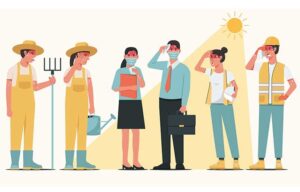Washington — A group of Democratic lawmakers is pressing OSHA for the “fastest possible implementation” of a standard on protecting workers from extreme heat exposure.

Photo: ST.art/iStockphoto
In a letter dated July 24, a coalition of 112 members of Congress led by Rep. Greg Casar (D-TX) calls on OSHA administrator Doug Parker and acting Labor Secretary Julie Su to address the “dire threat,” encouraging them to “mobilize all of the resources of the Department of Labor and the Biden administration that are necessary.”
The lawmakers ask for the standard to require employers to provide:
- Adequate hydration
- Rest breaks
- Areas for rest breaks that are shaded (for outdoor work) or air-conditioned (for indoor work)
- Medical services and training to address signs and symptoms of heat-related illnesses
- A plan for acclimatization to high-heat work conditions
OSHA published an advance notice of proposed rulemaking on Oct. 27, 2021. The agency’s National Advisory Committee on Occupational Safety and Health formed a work group on heat injury and illness soon after.
On May 31, the work group presented a report and formal recommendations for a possible final rule to NACOSH, which accepted a motion to forward them to OSHA, along with a sample exposure control plan/heat illness prevention plan.
An OSHA spokesperson on June 22 told Safety+Health the agency recently initiated a Small Business Regulatory Enforcement Fairness Act panel review, the next step before a proposed standard is published.
In the letter, the lawmakers cite analysis from watchdog group Public Citizen estimating that, on average, occupational heat stress in the United States leads to 700 deaths and 170,000 illnesses and injuries annually.
“These heat waves are dangerous, they are life-threatening and – with the devastating effects of climate change – they are only getting worse,” Sen. Bernie Sanders (I-VT) said in a press release. “I urge the administration to move quickly to create this national heat standard to protect workers on the job.”
McCraren Compliance offers many opportunities in safety training to help circumvent accidents. Please take a moment to visit our calendar of classes to see what we can do to help your safety measures from training to consulting.
Original article published by Safety+Health